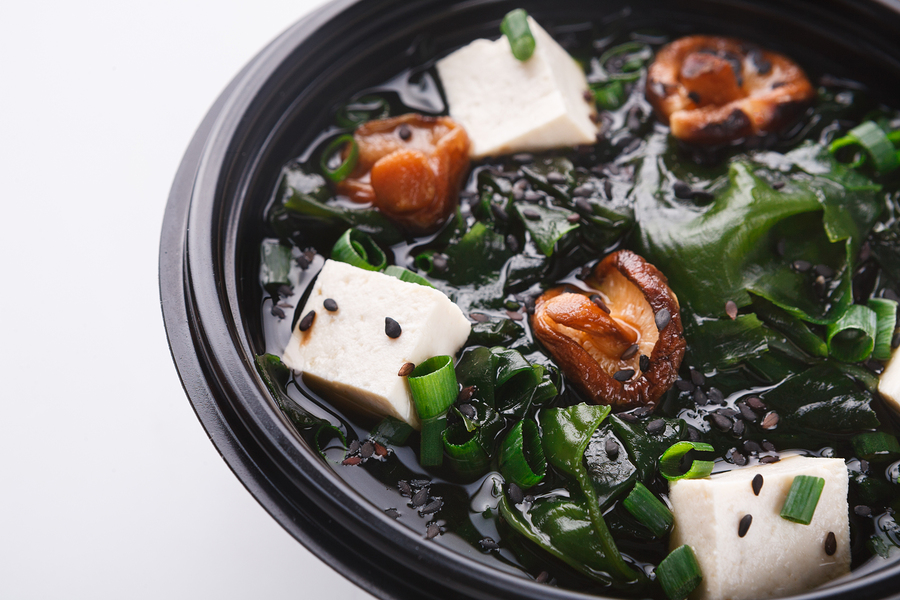Coming Soon: Super Foods from Eastern Cultures
There are some super foods that we grew up eating: strawberries, blueberries, oatmeal. Then there are the super foods that we find in other cultures: acai from the rain forests in South America, goji berries from Tibet and Inner Mongolia, kefir from Russia. And we are always on the lookout for new ones. Here is an introduction to four foods from the Eastern Hemisphere that will very likely be a part of American diets soon.
Moringa
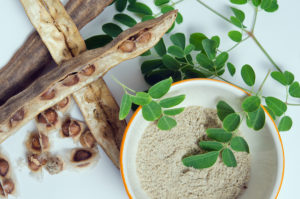 The moringa tree is native to the Himalayas and grows widely across Asia and Africa. It’s called the “miracle tree” for good reason: There is more nutrition contained in every part of the tree than in any other plant on the face of the earth. It’s also like having a buffet! The pods taste like green beans, the leaves like spinach, the seeds peanuts and the roots horseradish. And every one of them is packed with nutrients, including vitamins C and A, calcium, beta-carotene, protein, iron, fiber and lots and lots of antioxidants. A small serving of the tiny leaves alone has more than seven times the amount of vitamin C than an orange, four times the calcium of milk, and four times the beta-carotene of carrots.
The moringa tree is native to the Himalayas and grows widely across Asia and Africa. It’s called the “miracle tree” for good reason: There is more nutrition contained in every part of the tree than in any other plant on the face of the earth. It’s also like having a buffet! The pods taste like green beans, the leaves like spinach, the seeds peanuts and the roots horseradish. And every one of them is packed with nutrients, including vitamins C and A, calcium, beta-carotene, protein, iron, fiber and lots and lots of antioxidants. A small serving of the tiny leaves alone has more than seven times the amount of vitamin C than an orange, four times the calcium of milk, and four times the beta-carotene of carrots.
Some of the almost infinite range of benefits are healthy immune, digestive and metabolic systems; the relief of both stress and fatigue; strong bones and lower cholesterol. Recently studies have confirmed that moringa can treat diabetes by decreasing blood glucose level. All that in a fabulous smoothie!
The miracle tree also purifies water. Drop crushed moringa seeds into a bucket of contaminated water that is totally unfit to drink, and within an hour, the water is absolutely pure. The seeds produce chemicals that cause bacteria and other pollutants to settle.
Purple Rice
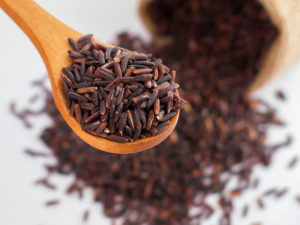 Also known as Korean black rice, forbidden rice, and emperor’s rice, these grains turn a beautiful iridescent violet when cooked. Like all rice species, it originated in Japan as far back as 2500 BCE when it was solely the food of the emperors, whether for its beauty or its rarity. Or maybe they wanted all the nutrients for themselves.
Also known as Korean black rice, forbidden rice, and emperor’s rice, these grains turn a beautiful iridescent violet when cooked. Like all rice species, it originated in Japan as far back as 2500 BCE when it was solely the food of the emperors, whether for its beauty or its rarity. Or maybe they wanted all the nutrients for themselves.
Purple rice is a source of protein, iron, vitamin E and antioxidants. The fiber content is similar to that found in brown rice, and like brown rice, there is the mild, nutty flavor. Fiber contributes to weight loss and to lower cholesterol and blood pressure. Protein helps the body build and repair muscle tissue, aids in cell growth and keeps bones strong. Iron helps to make red blood cells and transport oxygen. It also supports the transmission of nerve impulses that control body movements.
In China, purple rice has been used for centuries to create porridge, noodles, bread and dessert. And in Manipur in northeast India, it is known as chak-hao and is used to make desserts for significant celebrations.
Umeboshi
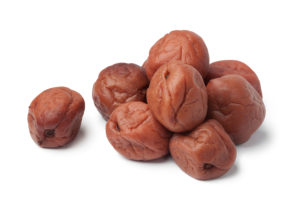 The word “umeboshi” literally means “dried plum” in Japanese, and the fruit is also called “salt plums” or “pickled plums,”even though the ume is more closely related to the apricot. The ume is pickled in salt barrels or in vinegar. If a sweet taste is wanted, honey is added to the mixture.
The word “umeboshi” literally means “dried plum” in Japanese, and the fruit is also called “salt plums” or “pickled plums,”even though the ume is more closely related to the apricot. The ume is pickled in salt barrels or in vinegar. If a sweet taste is wanted, honey is added to the mixture.
The pickled plums have remarkable restorative benefits and are one of the best preventative medicines available. The Japanese believe that “a umeboshi a day keeps the doctor away.” They have been using pickled plums for their medicinal properties for more than a thousand years. During Japan’s samurai period (1185-1868), no solider went off to war without pickled plums. They added flavor to rice and vegetables, purified water and neutralized battle fatigue. In addition, umeboshi rid the body of toxins, stimulated the digestive system, helped to eliminate toxins and cured diseases such as dysentery, thyroid and food poisoning.
Miyeok-guk
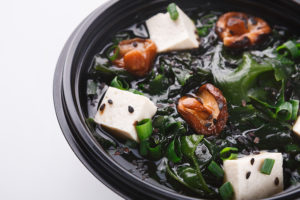 Otherwise known as Korean seaweed soup, miyeok-guk is made from seaweed and marinated tofu in miso broth for a salty taste with a sweet undernote. A staple in the Korean diet, this soup is a rich source of essential nutrients, particularly vitamin K. We don’t hear about vitamin K much, but when we need it, we really need it. It kicks in when we are wounded, signaling our platelets to gather at the scene of the wound to form a clot and stop the bleeding. The soup is also high in calcium, essential for strong bones and teeth; iron for energy and a healthy circulatory system; and omega-3 fatty acids, as well as a long list of other vitamins and minerals.
Otherwise known as Korean seaweed soup, miyeok-guk is made from seaweed and marinated tofu in miso broth for a salty taste with a sweet undernote. A staple in the Korean diet, this soup is a rich source of essential nutrients, particularly vitamin K. We don’t hear about vitamin K much, but when we need it, we really need it. It kicks in when we are wounded, signaling our platelets to gather at the scene of the wound to form a clot and stop the bleeding. The soup is also high in calcium, essential for strong bones and teeth; iron for energy and a healthy circulatory system; and omega-3 fatty acids, as well as a long list of other vitamins and minerals.



